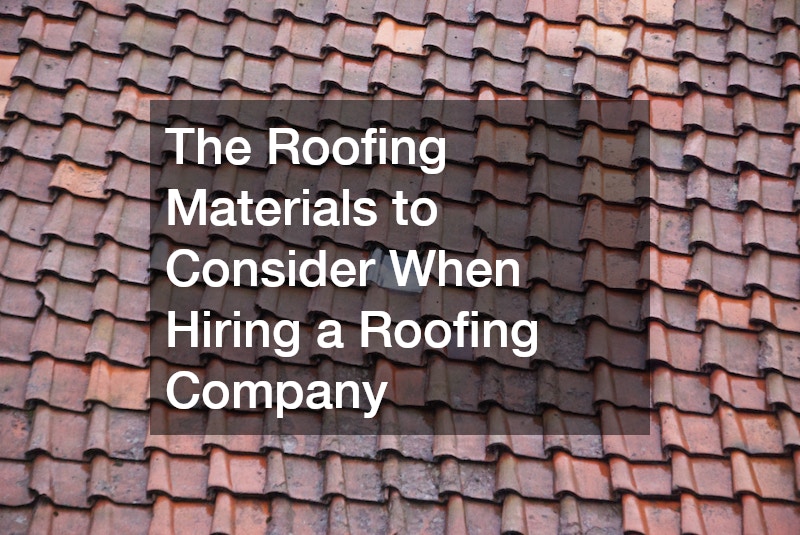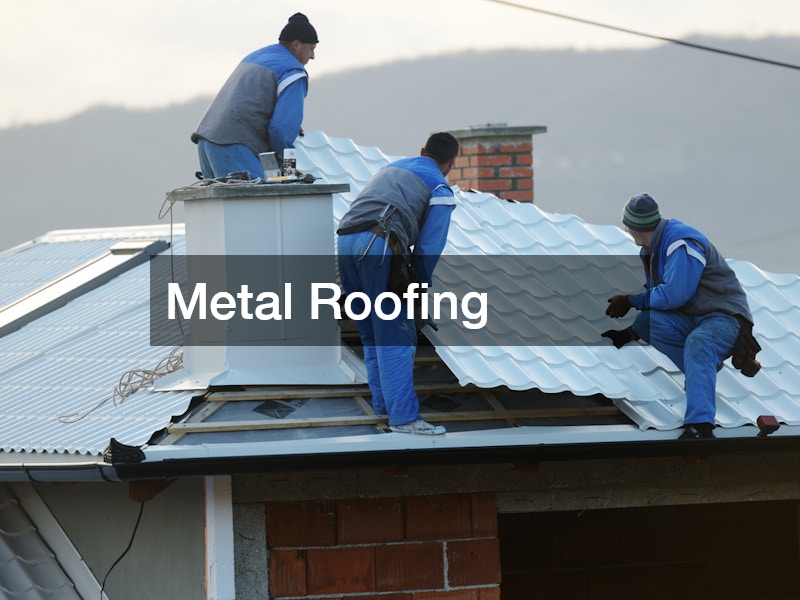When it comes to installing or replacing a roof, choosing the right materials is crucial. Not only do roofing materials affect the aesthetic appeal of your home or business, but they also impact durability, energy efficiency, and long-term maintenance costs. With so many roofing options available today, it can be overwhelming to know which material is best suited for your needs. If you’re planning to hire a roofing company for your project, understanding the types of roofing materials and their respective benefits is essential to making an informed decision. In this article, we’ll explore the most common roofing materials to consider and why each one might be the right choice for your property.
1. Asphalt Shingles
Asphalt shingles are one of the most popular roofing materials in North America, and for good reason. They are affordable, easy to install, and available in a wide range of styles and colors. Asphalt shingles are made from a fiberglass base that is coated with a layer of asphalt and topped with granules that add durability and UV protection.
One of the key benefits of asphalt shingles is their cost-effectiveness. They are significantly cheaper than other roofing materials like metal or slate, making them an ideal choice for homeowners on a budget. Additionally, asphalt shingles are relatively low-maintenance and can last up to 20-30 years if properly cared for. However, they do have some limitations, such as their susceptibility to damage from extreme weather conditions like high winds or hail.
If you’re working with a Kirkland roofing company, asphalt shingles may be the ideal option if you want an affordable, reliable roofing solution that balances performance with cost.
2. Metal Roofing
Metal roofing is gaining popularity for both residential and commercial properties due to its durability, longevity, and energy efficiency. Metal roofs are made from materials such as steel, aluminum, or copper, and they can last 40-70 years with minimal maintenance. Metal roofs are available in various styles, including standing seam panels and metal shingles, and can be customized to suit your aesthetic preferences.
One of the key advantages of metal roofing is its exceptional durability. Metal roofs are resistant to extreme weather conditions, including high winds, hail, and snow. They also have a higher resistance to fire, making them a safer choice for some properties. Additionally, metal roofs are highly energy-efficient because they reflect sunlight, reducing cooling costs in warm climates.
3. Clay and Concrete Tiles
Clay and concrete tile roofs are known for their distinctive appearance and exceptional longevity. Common in Mediterranean, Spanish, and Southwestern-style homes, clay and concrete tiles are durable, fire-resistant, and energy-efficient. Clay tiles are made from natural, kiln-fired clay, while concrete tiles are made from a mixture of sand, cement, and water.
One of the main benefits of clay and concrete tiles is their longevity. These roofs can last 50 years or more with proper maintenance. They are also resistant to harsh weather conditions such as high winds, heavy rain, and extreme temperatures. Furthermore, their ability to naturally insulate a home helps maintain a comfortable indoor temperature, reducing the need for air conditioning.
However, there are some considerations to keep in mind. Clay and concrete tiles are heavier than other roofing materials, which may require additional structural reinforcement to support the weight. Additionally, they tend to be more expensive than asphalt shingles or metal roofs, both in terms of initial installation and repairs.
4. Wood Shingles and Shakes
Wood roofing materials, such as cedar shingles or shakes, offer a natural, rustic aesthetic that is ideal for homes or buildings that want a traditional or cabin-like appearance. Wood shingles are machine-cut, while wood shakes are hand-split, which gives them a more textured, rugged look. Both options are typically made from durable woods such as cedar, redwood, or pine.
Wood shingles and shakes are prized for their beauty and insulating properties. They are excellent at regulating temperatures within the home, keeping it warm in the winter and cool in the summer. Additionally, wood roofing materials are environmentally friendly since they are biodegradable and often made from renewable sources.
5. Slate Roofing
Slate roofing is one of the most durable and aesthetically appealing roofing options available. Made from natural stone, slate tiles are incredibly long-lasting and can endure for 100 years or more when properly installed. Slate roofs are fire-resistant, resistant to harsh weather conditions, and have a distinctive, elegant appearance that can enhance the curb appeal of any home.
The main disadvantage of slate is its cost. It is one of the most expensive roofing materials, both in terms of the initial installation and the labor required for its installation. Slate roofs also require special expertise to install properly, so working with a skilled roofing company is essential for achieving a proper installation. Additionally, slate tiles are heavy and may require additional structural support.
.


